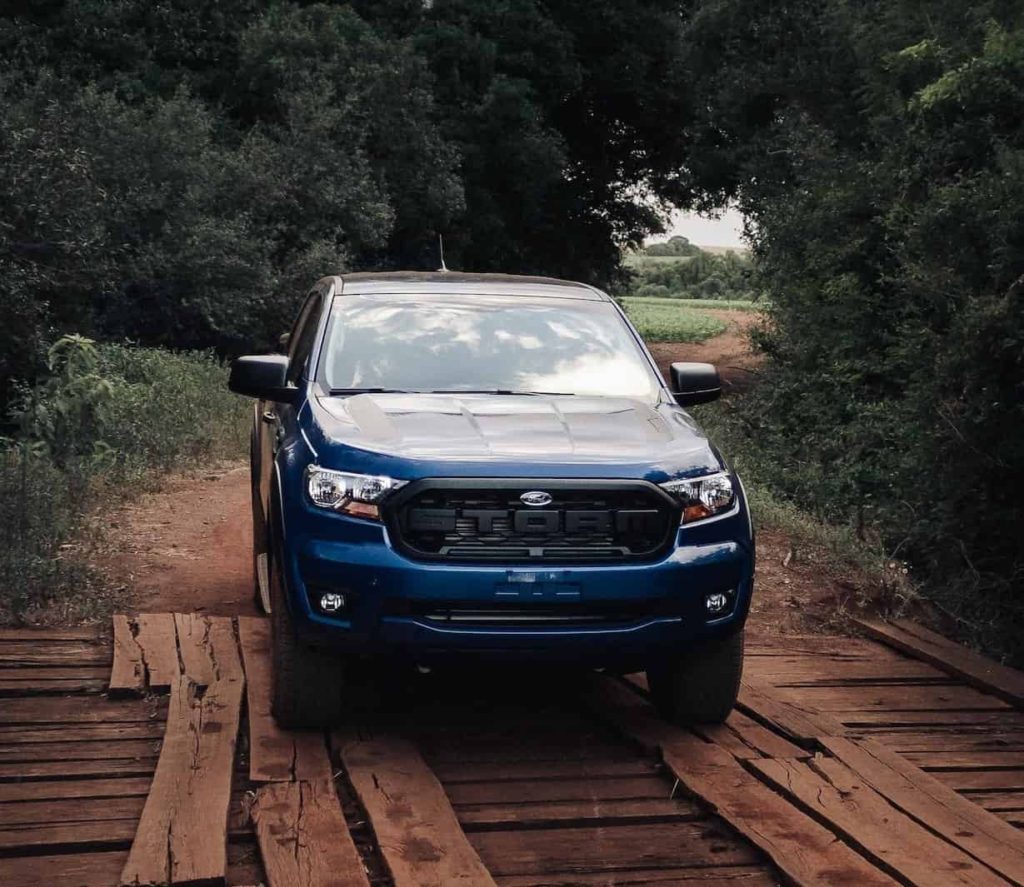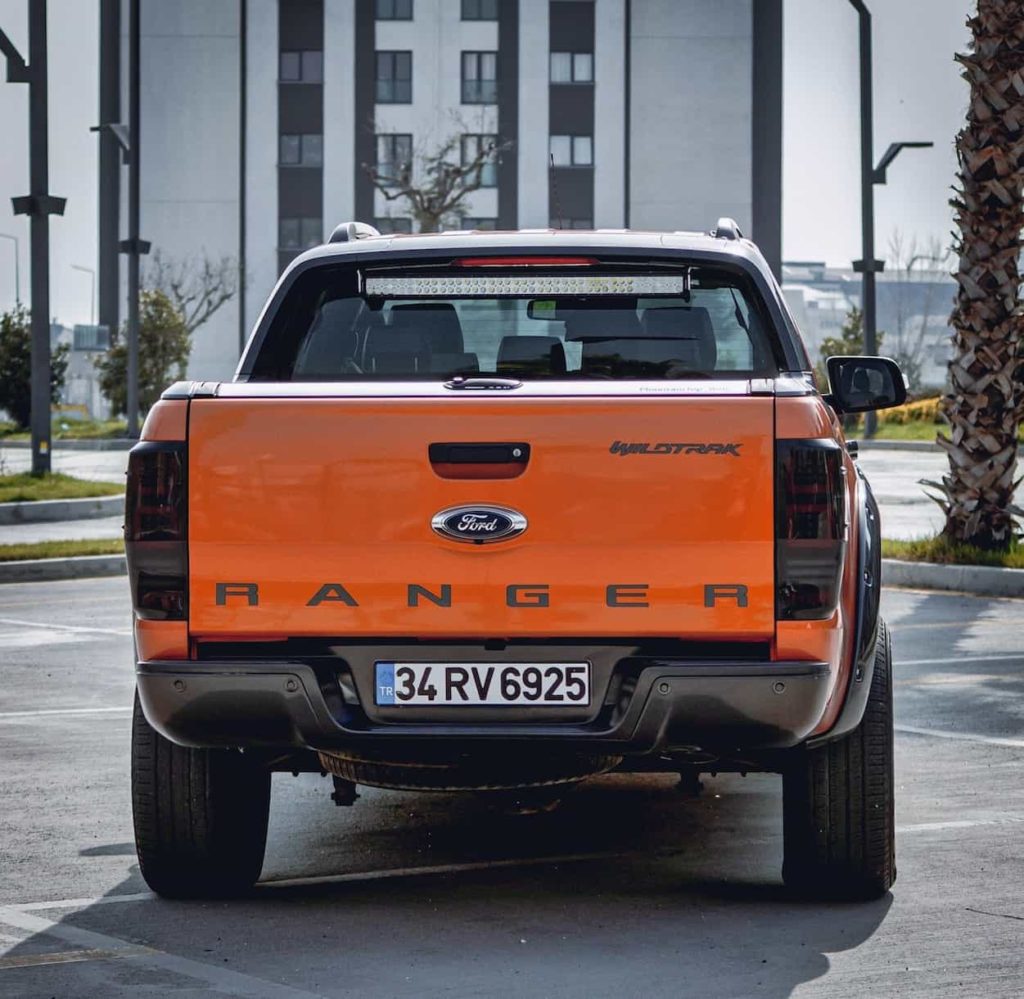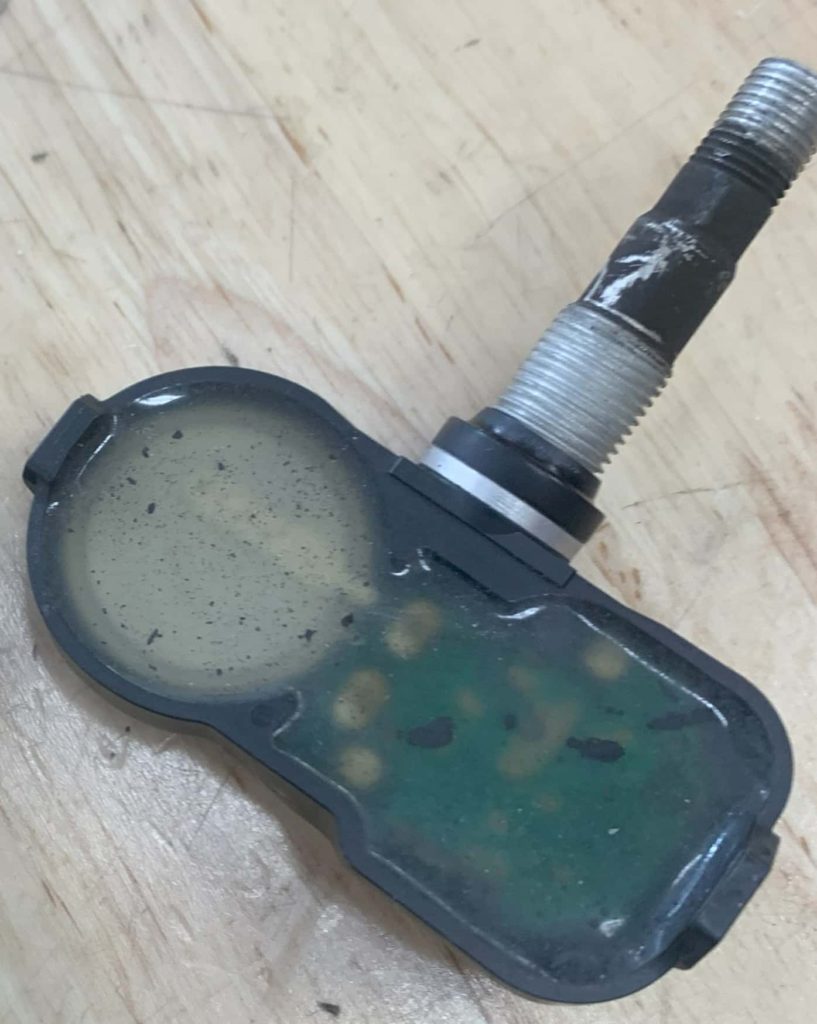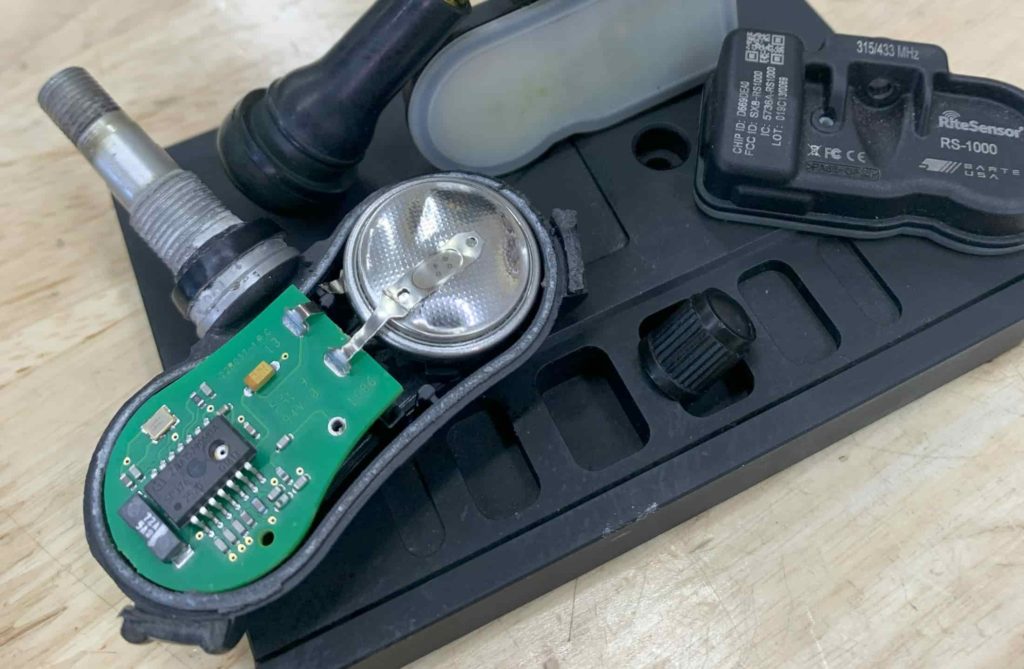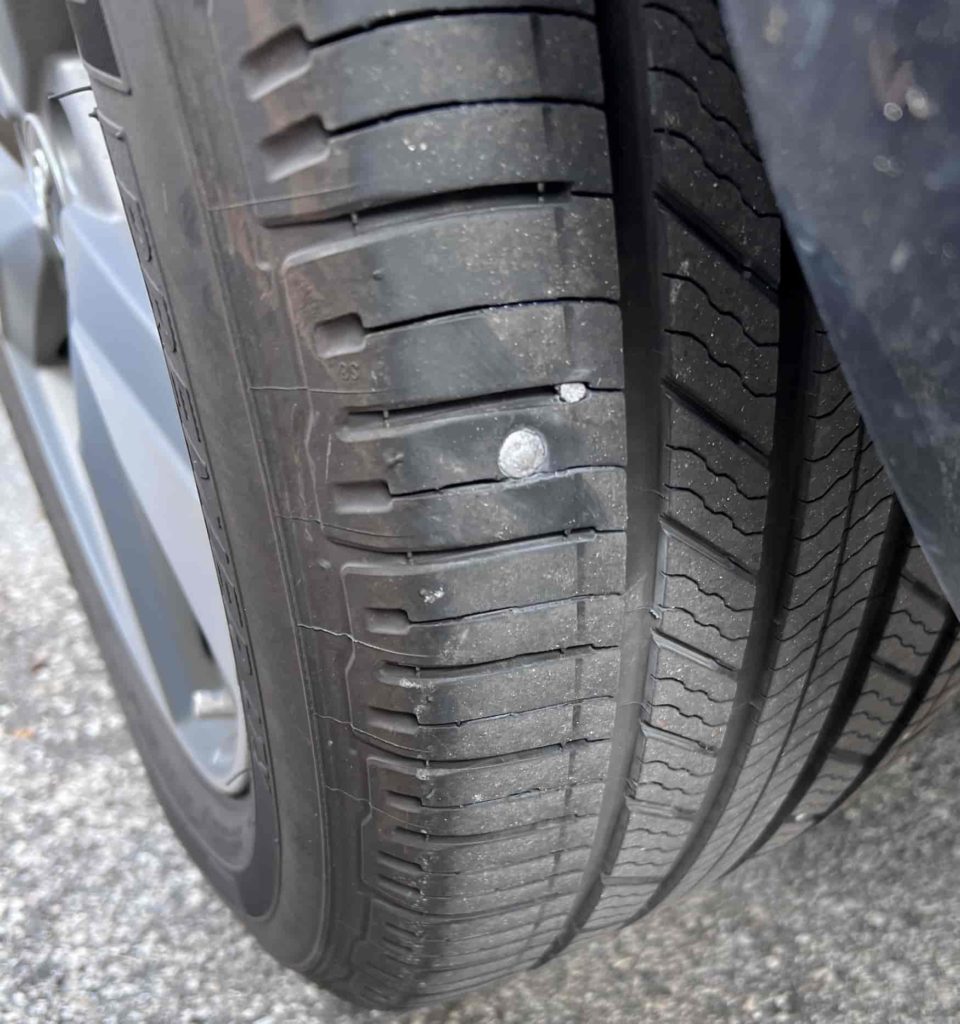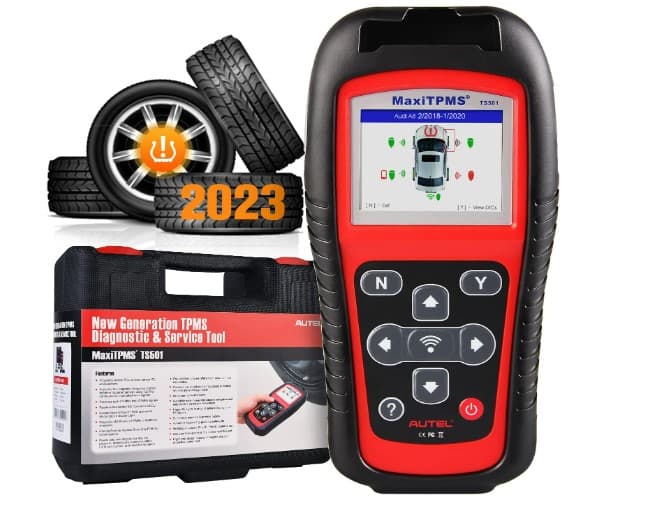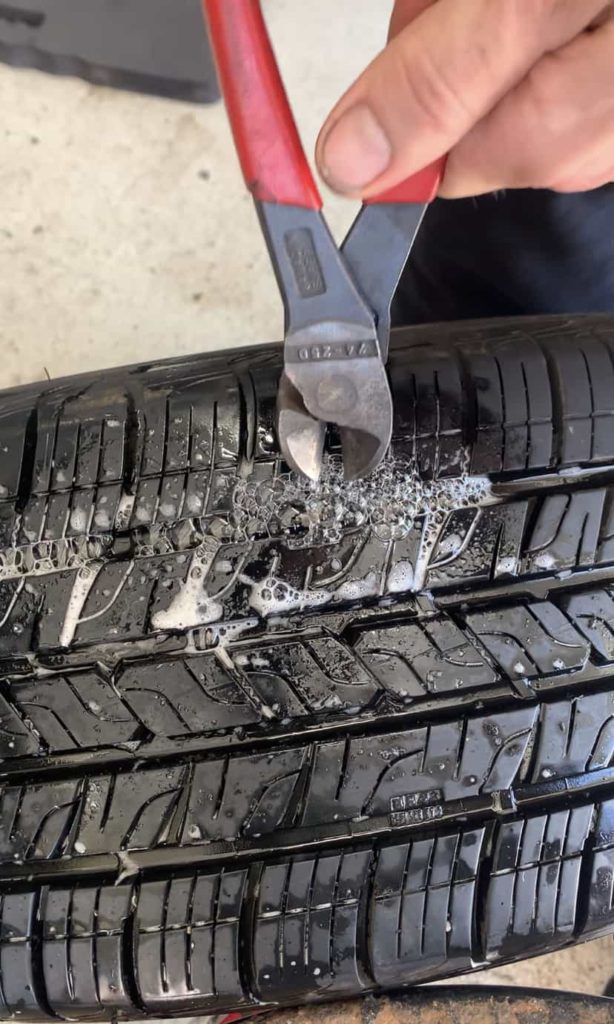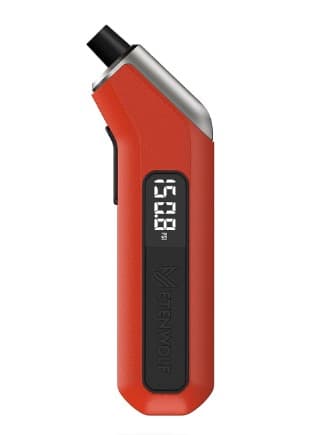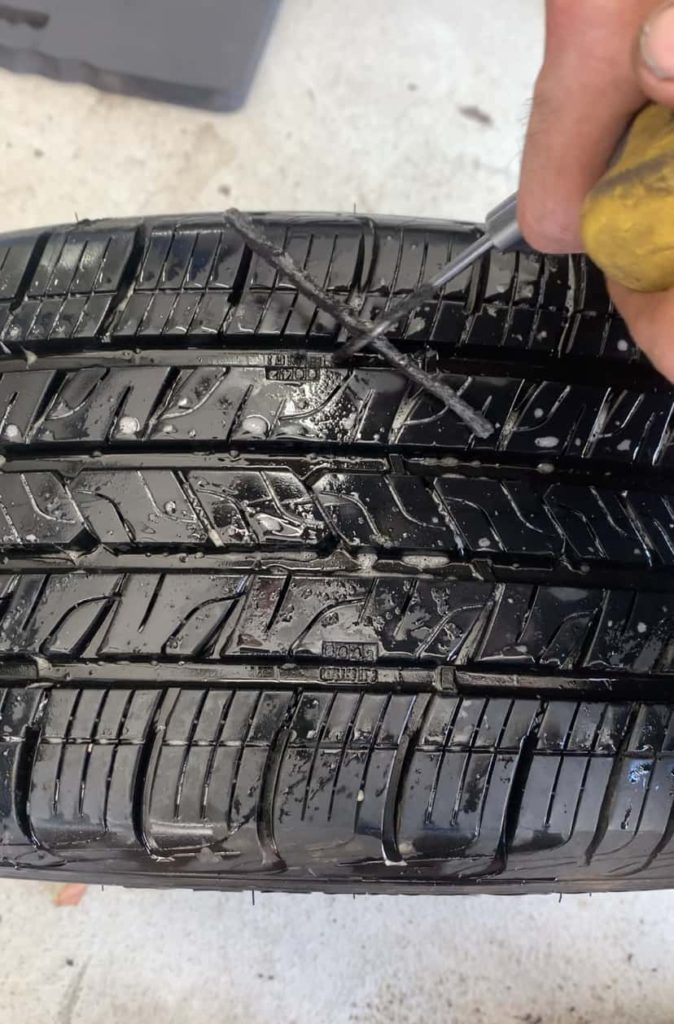What is the Ford Ranger TPMS?
The Ford Ranger tire pressure monitoring system (TPMS) is just that, a system made up of 3 main components that work together to assist and alert the driver when the tires need their attention. The Ranger TPMS is made up of tire pressure sensors, a TPMS receiver module, and the truck’s main computer known as the ECU.
How the TPMS Components Operate in a Ford Ranger
Sensors for Monitoring Tire Pressure and Heat: Found at the base of each tire’s valve stem, these sensors start actively gathering data on both the tire pressure and the temperature when the car goes above 20 mph. Each sensor is housed in a compact plastic casing and comes with its own built-in circuit board, operating through battery-driven transmitters.
Radio Frequency Data Transmission: When the Ford Ranger is moving or experiences a change in tire conditions, the sensors wirelessly relay the gathered information. Depending on the setup, they either use 315 MHz or 433 MHz frequencies for Radio Frequency (RF) communication.
Receiver for TPMS Data: Within the Ranger vehicle body, there’s a supplementary circuit board or microcomputer tasked with capturing the wireless signals sent by the tire sensors. It’s called the TPMS receiver module. This unit subsequently forwards the data to the Ranger’s main computer, the ECU, for additional scrutiny.
Mustang’s Main Computer (ECU): Serving as the Ford Ranger’s primary data analysis center, the Electronic Control Unit (ECU) carefully reviews the received tire pressure and temperature metrics and matches them to Ford’s preset guidelines. If the tire pressure dips by 15-20% or more below the suggested levels, it triggers a low-pressure warning.
Warning Alerts on the Dashboard: Should the ECU detect that a tire’s pressure has dropped below the safety benchmark, a yellow warning light in the shape of an exclamation mark is illuminated on the dashboard.
Self-Diagnostic Function: The system is also capable of self-diagnosing. If there is a malfunction within the TPMS—be it a sensor failure or a communication issue between the receiver module and the ECU—an additional warning light or message may appear to indicate that the system itself needs attention as well as the tire pressure light will start flashing or blinking.
How to Reset the Ford Ranger Tire Pressure System
Park the truck on level ground.
Measure and adjust the tire pressure to set them at the exact cold recommended pressure Ford recommends.
Drive the truck for a few minutes at speeds exceeding 20 Mph.
How to Retrain the Ford Ranger Tire Pressure Sensors
Retraining the tire pressure sensors should be done after tire rotations, tire replacements or any type of tire repair or service. The purpose of retraining the sensors is so that the Ford Ranger ECU knows the location of each wheel when reporting the sensor data.
Turn Off Engine: Turn the Ranger’s ignition to the OFF position.
Ignition On, Engine Off: Quickly press the start button twice without stepping on the brake pedal, or turn the key to the second position (ACC) to activate the ignition while leaving the engine off. In other words, you want electrical power without the engine on.
Toggle Hazard Flasher Lights: Press the hazard light button on and off three times, for a total of six presses on the button.
Enter Reset Mode: If you’ve correctly followed steps 1-3, you will hear a single horn honk and see a screen notification indicating that you’ve entered “RESET MODE”.
Driver’s Side Front Tire: Step outside the truck and unscrew the valve cap from the front left tire.
Deflate Driver’s Side Front Tire: Press the valve core to release air until the horn sounds, confirming that the wheel’s position has been recognized.
Passenger’s Side Front Tire: Go to the front right tire, remove the valve cap, and begin to deflate it until the horn sounds.
Passenger’s Side Rear Tire: Advance to the rear right tire, take off the valve cap, and continue releasing air until the horn sounds.
Driver’s Side Rear Tire: Finally, move to the rear left tire, remove the valve cap, and deflate it until the horn sounds.
Training Successfully Completed: A “Training Complete” message will display on the information screen if you’ve followed all steps correctly.
Switch Off Engine: Turn the vehicle’s ignition back to the OFF setting.
Reinflate All Tires: Pump all tires back to their specified pressure.
Drive: Operate the truck for a few minutes, ensuring to exceed 20 mph during the drive.
Ford Ranger TPMS Sensor Retraining Tips
🔎 If no horn sounds after completing the 3rd step, restart the entire procedure. (cycle the power a few times, drive the truck, and then try again.)
🔎 It’s vital to execute the reset steps for the Ford Ranger strictly in the order outlined above.
🔎 If you hear two beeps upon turning off the ignition, redo the entire reset sequence.
How to Change the Ford Ranger Tire Pressure Measured Units
Select the vehicle icon on the top right of the information display screen.
Select ADDITIONAL SETTINGS.
Scroll down and select GENERAL.
Select TIRE PRESSURE UNIT.
Press the DOWN arrow.
Choose between PSI, kPa, or bar.
How to View the Current Tire Pressure on Ford Ranger Display Screen
Press the MENU button on the steering wheel. (button with 3 lines next to the OK button)
Scroll down and select VEHICLE MAINTENANCE.
Select TIRE PRESSURE
2023 Ford Ranger Tire Pressures
TIRE SIZE | FRONT PSI | REAR PSI |
265/65R17 | 30 | 38 |
255/70R16 | 35 | 35 |
265/60R18 | 35 | 35 |
215/55R16 | 35 | 35 |
Different Ford Ranger tire Pressure Warning Messages
There are 3 different tire pressure warning messages that can appear along with the standard low tire pressure warning light:
"Tire Pressure Low"
This warning indicates that at least one tire is low on air and needs to be inflated to the recommended pressure specifications.
"Tire Pressure Monitor Fault"
This message suggests that there’s a problem or glitch in the tire pressure monitoring system itself, causing the low tire light to flash.
"Tire Pressure Sensor Fault"
This warning indicates that at least one tire pressure sensor is not successfully communicating with the TPMS receiving module.
Causes Triggering the Ford Ranger Low Tire Pressure Warning Light
Underinflated tires
Overfilled tires
Tires losing air
Missing sensor in the wheel (e.g., when utilizing a spare tire)
Depleted or faulty TPMS sensor battery
Malfunctioning TPMS receiver or ECU
Electronic interference from nearby devices or other Ford models
Variations in climatic conditions or altitude
Overloaded vehicle
Application of tire chains
Heavy window tinting
Ford Ranger Tire Pressure Sensor Batteries
Tire pressure sensors fundamentally consist of a miniature circuit board with a transmitter linked to a compact battery. Every tire on a Ford Ranger is equipped with an individual tire pressure sensor, which runs on a silver-oxide battery (note that the spare tire for the Ford Ranger doesn’t come with this sensor). This sensor incorporates an electronic circuit board that’s directly linked to the battery and is housed within a plastic casing. Due to its design, you can’t just switch out or recharge the battery when its charge diminishes; the entire sensor along with the valve stem needs to be replaced. Typically, Ford’s tire pressure sensors have a lifespan ranging from 5 to 10 years or approximately up to 100,000 miles.
Troubleshooting Tire Pressure Problems in the Ford Ranger
Sometimes following the Ford Ranger tire pressure reset procedure or tire pressure retraining process does not get the tire light to turn off. When the tire light turns on and won’t turn off, you need to figure out what the problem is. Here are 6 possible problems and solutions to help resolve your tire light issues.
SOLUTION 1: Is a Tire Leaking Air Pressure?
The first thing that should be done when the low tire pressure light turns on is to find out if one or more of your tires are losing air from a leak. Take a walk around the Ranger while visually inspecting each wheel and tire. After that, follow these 3 steps:
Don’t only use the built in tire pressure measurement system, manually measure the air pressure in all the tires to pinpoint the one that’s underinflated.
Use a portable or gas station tire pressure inflator to add and correct the tire pressures. Check the pressure again after inflating to be precise.
Drive the Ford Ranger over 20 Mph for a few minutes.
ANSWER: If after inflating the tires and then driving the Ranger, the low tire pressure light turns off, but then reactivates later – whether it’s within seconds, minutes, or days- you can be 99.9% certain that your tire or wheel has an air leak of some kind. To locate the exact spot on the wheel or the tire the leak is coming from, use solution 6 below.
SOLUTION 2: Clearing Diagnostic Trouble Codes From the Ford Ranger ECM
The Ford Ranger computer is called the ECU or ECM. The ECM records every piece of data that the Mustang sensors produce, including the data from the tire pressure sensors. When the data the sensors collect do not match the preset data the computer has for them, the ECM triggers a diagnostic trouble code (DTC) to let the driver know something is wrong. DTC’s come in the form of a check engine light or in this case a low tire pressure warning light. Every DTC is recorded and stored in the computer, some DTCs are permanent and some are temporary. So, just like how when your laptop freezes, you reboot it by powering it off and then on, you can do the same with the Ford Ranger.
Check and adjust the tire pressures to the recommended cold values.
Make sure the engine is off and all power is off. (radio, lights, etc..)
Disconnect the negative terminal of the main 12 volt battery.
Wait a moment.
Reconnect the negative terminal.
Drive the Mustang for about 30 minutes at 50 Mph.
ANSWER: The tire pressure light will turn off after following these steps, but does it turn back on? If it does turn back on, this means you either do in fact have a leaking tire or one or more tire pressure sensors are faulty (low battery) and need to be replaced. Follow solution 3 to find out which sensor is faulty.
SOLUTION 3: Using a TPMS Diagnostic Tool to Identify a Malfunction TPMS Sensor
If you followed solutions 1 & 2 and you believe you may have a tire pressure sensor that is not working, you will need a TPMS diagnostic tool. I have personally been using Autel TPMS diagnostic tools for years and recommend them. Use a TPMS diagnostic tool to find out which tire pressure sensors aren’t working properly by testing each tire pressure sensor.
Plug the TPMS diagnostic tool into the Ford Ranger OBD2 port.
Set the TPMS tool right in front of the valve stem on the drive side front wheel and press the “Trigger” or “Test” function on the tool.
Wait a few seconds and the tool will respond.
Do the same for other tires in the order the tool requires.
ANSWER: Once you have completed the testing procedure of each tire pressure sensor, the TPMS diagnostic tool will provide a report on the status of each TPMS sensor. If the diagnostic tool cannot communicate with a TPMS sensor or report’s that a sensor’s battery is low or dead, that sensor needs to be replaced with a new one.
SOLUTION 4: Reviving a Dormant Tire Pressure Sensor
Occasionally a Ford Ranger tire pressure sensor may become inactive or non-responsive. You can attempt to re-activate the TPMS sensor by doing the following:
Determine which tire pressure sensor is causing the problem and release air from that tire.
Release about 15-20 Psi by pressing the valve stem core in.
Inflate the tire back to its recommended pressure plus an additional 5 Psi. For example, a tire requires 33 Psi, fill it to 38 Psi. This is only temporary.
Take the Ranger for a short drive where you exceed 20 Mph.
Park the Ranger and set the pressure back to the recommended pressures.
ANSWER: This solution works well before or after a failed tire pressure sensor re-training attempt.
SOLUTION 5: The Tire Light Intermittently Activates and Deactivates
If you live in an environment where the temperature drops overnight or seasonal temperatures change, you have probably experienced starting the car in the morning and seeing the low tire pressure light on. Then, as you drive and the weather warms up, the tire light turns off on its own. This is normal, yet avoidable.
ANSWER: : Whenever you set and adjust your tire pressures, only do so when the tires are cold. This means the Ford Ranger has not been driven for at least 3 hours or less than a mile. This is the one way you can be certain of setting your tire pressure with accuracy.
SOLUTION 6: Locating the Source of the Tire Leak
If you know you have a tire that is leaking air, you can find out where on the tire the leak is coming from. You will need water, soap, a portable tire inflator, and a spray bottle.
Inflate the tire pressure to at least 35 Psi.
Get the spray bottle and fill it with water and soap. Shake it or mix it up.
Spray down the inflated tire. Soak it completely with the soap/water mixture.
Look over and examine the tire while it’s wet for small bubbles.
ANSWER: Once you have found the bubbles on the tire (or valve stem), you have found the source of the leak. Circle or mark the leak location with chalk so the leak location is easily visible for repair.
Understanding Ford Ranger Tire Pressure
The Impact of Air Temperature on the Ford Ranger's Tire Pressure
In a Ford Ranger, tire pressure is directly impacted by ambient air temperature. A scientific principle explains that gas expands when heated and contracts when cooled. For every 10-degree Fahrenheit drop in temperature, tire pressure decreases by approximately 1 Psi. Conversely, a 10-degree rise leads to a 1 Psi increase. So, if you set your tire pressure to 30 Psi on a 70°F day, it could drop to 28 Psi when the temperature falls to 50°F, potentially triggering the TPMS low tire pressure light.
How to Check Tire Pressure
Initial Visual Check: Before taking any action, we recommend a swift stroll around the truck to visually examine each tire.
Digital Tire Pressure Gauge: We recommend using a digital tire pressure gauge for accuracy and ease of use.
Check Cold Tires: Make sure your Ford Ranger has been stationary for at least three hours or has been driven less than one mile before checking or adjusting the air pressures.
Read Pressure: Remove the valve cap from one tire and press the digital gauge on the valve stem to measure the pressure.
Compare: Check the measured pressure against Ford’s recommended pressure. The recommended front and rear pressure is on a sticker when you open the driver side door.
Adjust: Use an air pump to either inflate or deflate the tire to reach the recommended pressure.
Double-Check: Re-measure the tire pressure using the gauge after changing the air pressure.
Cap It: Put the valve cap back on!
Repeat: Follow the same steps for the remaining 3 tires.
Is it Safe to Drive the Ford Ranger With the Low Tire Pressure Light On?
The low tire pressure light turns on for a reason. It means something is wrong. It either means you have low tire pressure or a sensor-ECU problem. Driving with the low tire pressure light on is risky if you don’t know why it’s on. We recommend stopping driving the Ford Ranger as soon as possible, checking the tire pressures and determining why the tire light is active.
Why is the Ford Ranger Tire Light Flashing?
The tire light flashes when one or more tire pressure sensors have stopped communicating with the Ford Ranger ECU or TPMS receiver module. It is known as a TPMS malfunction indicator. This will either occur when driving with the spare tire on (because it doesn’t have a TPMS sensor inside) or when one or more tire pressure sensor batteries die or are low on power. Use Solution 3 above to diagnose this issue.
How Effective are Tire Plugs for Sealing Tire Punctures?
I have worked in automotive shops for years and highly recommend tire plugs for repairing tire punctures on the tread of a tire. They are strong and will last for the life of the tire. Do not use them on tires with low tread or on the sidewall of a tire.
The Potential Risk of Using Tire Sealants
Tire sealants can be lifesavers in the short term but can be costly in the long term. Tire sealants can damage tire pressure sensors as well as cause the tire to become imbalanced.
Everything in this article is applicable to all Ford Ranger models and versions including the Ford Ranger XL, XLT, Lariat and Ranger Raptor.
Please note that this blog post contains Amazon affiliate links. This means that if you make a purchase through one of these links, we at TPMSRESET.COM may earn a small commission at no extra cost to you. We only recommend products that we personally use and believe in. Thank you for supporting us.
